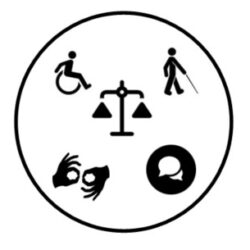As explained in the previous post, on May 16, 2025, the Department of Energy (DOE) published a “Direct Final Rule” (DFR) that would rescind the Department’s section 504 new construction… Read Moreabout Update on Trump Administration Attack on Accessible Buildings: Don’t Mess With Our Community!
Tag: ADA
Fight Back Against Trump Administration Attack on Accessible Buildings
On May 16, 2025, the Department of Energy (DOE) published a “Direct Final Rule” (DFR) that would rescind the Department’s section 504 new construction regulation and specifically its incorporation of… Read Moreabout Fight Back Against Trump Administration Attack on Accessible Buildings
Key Disability Rights Regulations Will Remain Authoritative in the Wake of Loper Bright: A Toolkit for Litigation.
On June 28, 2024, the Supreme Court handed down its decision in Loper Bright Enterprises v. Raimondo, overruling the regulatory deference in Chevron U.S.A. v. Natural Resources Defense Council. To… Read Moreabout Key Disability Rights Regulations Will Remain Authoritative in the Wake of Loper Bright: A Toolkit for Litigation.
Settlement Reached in Tennessee Deaf Prisoner Case
Tennessee Department of Correction commits to provide necessary technology and services to ensure equal access. On January 6 — two days before trial was set to begin — we settled… Read Moreabout Settlement Reached in Tennessee Deaf Prisoner Case
Don’t Believe the Spin: 17 States Are Trying to Destroy Section 504.
Seventeen states have filed a lawsuit in Texas that, among other things, seeks to have our oldest and most basic disability rights statute — Section 504 of the Rehabilitation Act… Read Moreabout Don’t Believe the Spin: 17 States Are Trying to Destroy Section 504.
Amended Agreement with CDOC Adds Monitoring Team, Reinforces Protections for Deaf and Hard of Hearing Prisoners.
Disability Law Colorado (DLC) reached an amended settlement agreement with the Colorado Department of Corrections (CDOC) following allegations that CDOC was out of compliance with a 2022 settlement. The amended… Read Moreabout Amended Agreement with CDOC Adds Monitoring Team, Reinforces Protections for Deaf and Hard of Hearing Prisoners.
Baltimore agrees to spend at least $44 million to fix inaccessible sidewalks & curbs
In 2021, F&R, alongside our rightous co-counsel at Disabilty Rights Maryland, Disability Rights Advocates, and Goldstein, Borgen, Dardarian & Ho, filed a class action lawsuit against Baltimore City for its… Read Moreabout Baltimore agrees to spend at least $44 million to fix inaccessible sidewalks & curbs
Rights of Immigration Detainees with Disabilities
A quick guide for lawyers assisting disabled detainees. The Department of Homeland Security (DHS), its components, including Customs and Border Protection (CBP) and Immigration and Customs Enforcement (ICE), and their… Read Moreabout Rights of Immigration Detainees with Disabilities
Excellent Order for Deaf Prisoners in our Case Against Tennessee Department of Correction
In July, we received an excellent ruling from the court on cross-motions for summary judgment in Trivette v. Tennessee Department of Correction. While two of our plaintiffs were dismissed out… Read Moreabout Excellent Order for Deaf Prisoners in our Case Against Tennessee Department of Correction
ADA Defense Lawyers Prolong Litigation and Postpone Access: A Case Study of Litigation Abuse
[Originally published on the blog of the Civil Rights Education and Enforcement Center on February 27, 2018.] Title III of the Americans with Disabilities Act (ADA) prohibits disability discrimination by… Read Moreabout ADA Defense Lawyers Prolong Litigation and Postpone Access: A Case Study of Litigation Abuse





